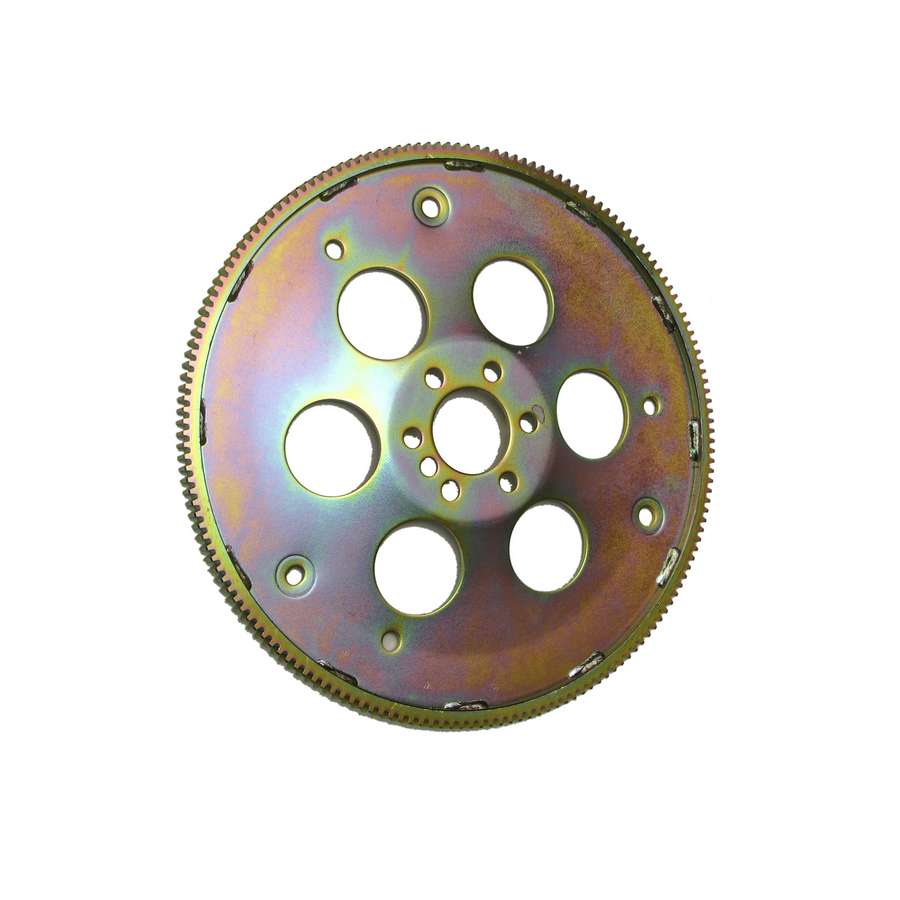Flexplate Sfi C/M GM LS Engine (Except T
B & M PERFORMANCE | Part# BMM-20340
Hurry only 2 left
Highlights:
- Bullet Point #2 - B&M Quality
- Bullet Point #4 - Balanced
- SFI Certification Sticker - Included
- Bullet Point #3 - One piece
- Bullet Point #1 - SFI 29.1 Safety Rating
- Dual Pattern - Yes
- IHRA Legal - Yes
- NHRA Legal - Yes
- SFI Approved - Yes
- Outside Diameter (in) - 14.13
- Tooth count - 168
- Crankshift Bolt Hole Count - 6
- Weight (lb) - 6.00
- Title - B&M 20340 Flexplate, 29.1 Approved, Fits LSX Type Motors
- N/A
- Application - Fits GM LSx motors. Including 2010 and newer automatic Camaro with L99 engine and 1st through 4th generation Chevrolet Camaro and Pontiac Firebird. Also fits all GM LSx motors using an automatic transmission including Corvette, GTO, and G8
Flexplate For LSX Type Motors
$146.95
Fits GM LSx motors including 2010 and newer automatic Camaro with L99 engine and 1st through 4th generation Camaro's and Firebird's. Also fits all GM LSx motors using an automatic transmission including Corvette, GTO, and G8. SFI 29.1 approved and legal for all NHRAIHRA classes. Ideal for street applications to extreme duty racing and high RPM use(above 6,000 RPM). B&M's new Radial Tension Technology puts a new spin on flexplate technology. As engine performance levels increase, stronger flexplates become necessary. Until this point, stronger flexplates meant thicker flexplates. This works, but it adds unwanted weight and prohibited the flexplates from working as it was designed. Flexplates are designed to provide a protection against converter and transmission run out or OEM misalignment, which will cause transmission andor converter failure. A rigid flexplate gives no protection. The ultimate design for a flexplate is extreme strength, flexibility and minimal weight. B&M's new RTT performance flexplate accomplishes this goal. B&M's design allows for the removal of unnecessary material from noncritical stress areas. Less material means less weight giving you the benefits of a lightweight, flexible design with thicker material for maximum strength!
Categorized under:
· Drivetrain » Automatic Transmissions and Components » Flexplates and Components
· Drag Racing Parts and Accessories » Drivetrain » Automatic Transmissions and Components » Flexplates and Components
· Engine Builder » Drivetrain » Automatic Transmissions and Components » Flexplates and Components
· Late Model Muscle » Drivetrain » Automatic Transmissions and Components » Flexplates and Components
· Transmission » Flexplate » Automatic Transmission Flexplate








